This post is also available in:  Deutsch (German)
Deutsch (German)
Tyres are crucial for a safe and comfortable ride. If you want to cover longer distances in Africa, you should think about the tyres on your car.
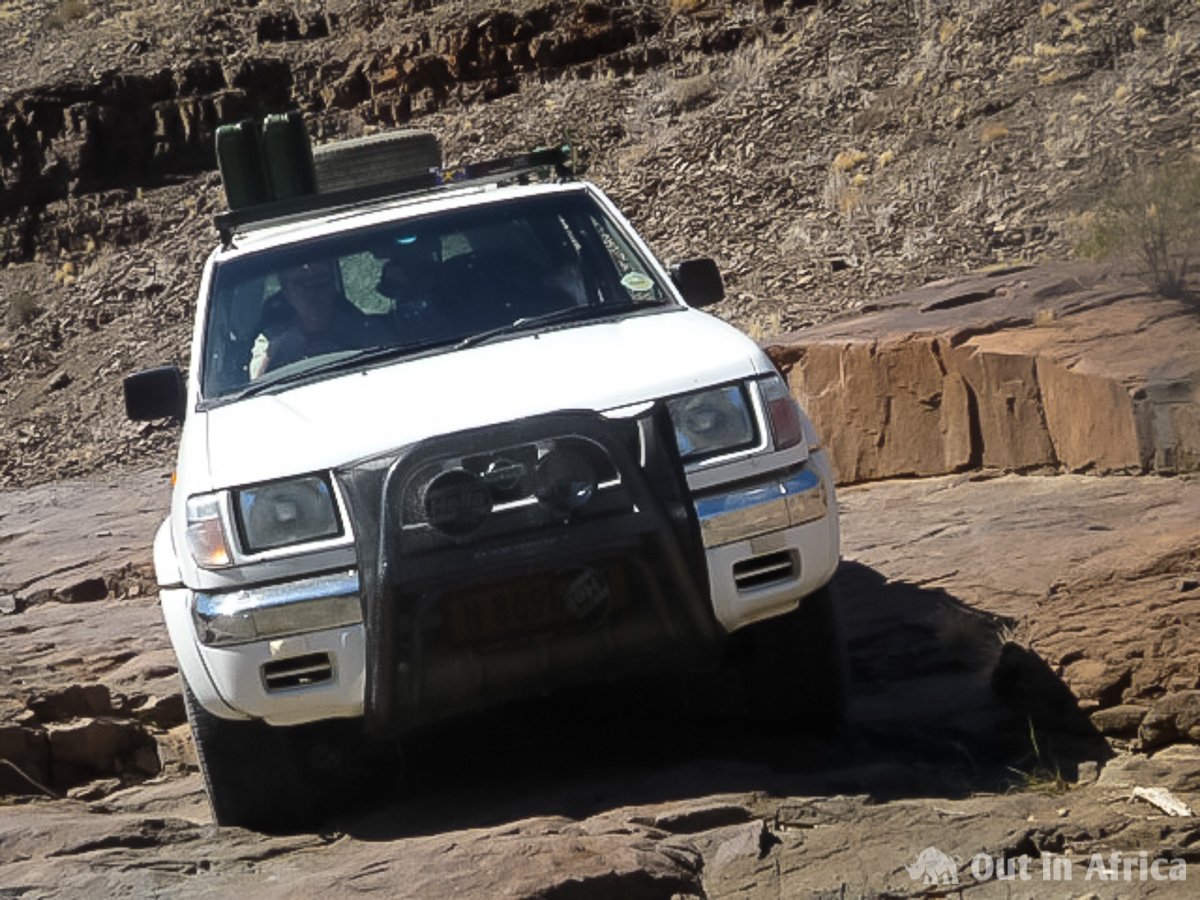
You should consider the following issues about tires in Africa:
- The roads in Africa are different from those in Europe. Yes, there are many tar roads, but there are even more unsurfaced roads. These Gravel Roads can be in good condition, but, mostly, and especially at the sights that every tourist wants to visit, they are terrible. Maybe you want to drive offroad over rocks, through sand or mud. You need tyres that suit these circumstances.
- If you are not in a big city, the nearest tyre shop can be hundreds of kilometres away. Even in the remotest corners, there are small workshops that can repair a tyre for you. But, if they have a few new tyres in stock at all, they don’t have all the sizes and certainly not from some exotic manufacturer.
Our tires have lasted 45,000 km. Now we had to buy new ones.
Some of you may be shocked: only 45,000 km?
For the tyres, we have on the car (BF Goodrich MT), and for the roads, we have driven (among other things a lot of Gravel Road and also Offroad) a life span of 45,000 km is perfectly average.
Before buying, we have thought about the following questions:
All-terrain or mud-terrain?
No normal street tyres
When it comes to the type of tyre, we do not consider standard road tyres. Yes, we also drive quite a lot of tar roads, but we live in a country where there are many more gravel roads than tar roads, and we also like to drive on tracks that can no longer be classified as roads.
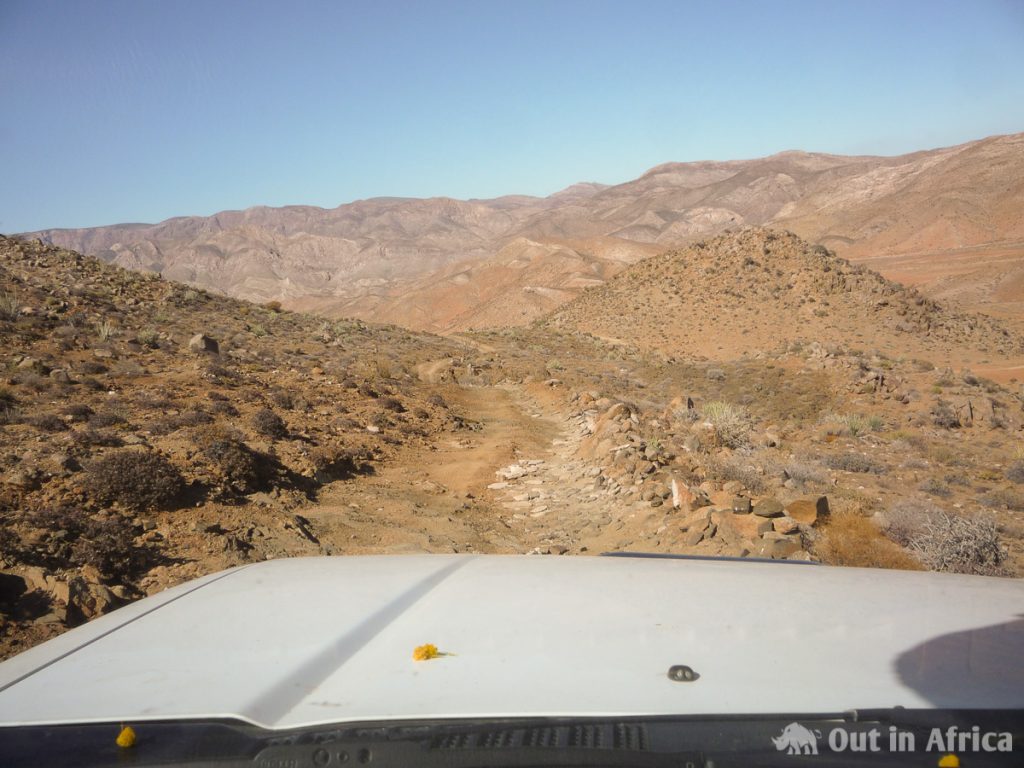
We need tyres with a tread pattern, and rubber composition that can cope with gravel, sand, rocks and (to a lesser extent) mud – but can also drive on a tarred road. It is also essential that the tyres have reinforced sidewalls with high puncture resistance, as they not only come into contact with the surface of the ground from below but can also be damaged laterally by rocks and branches.
We are aware that off-road tyres run down faster due to a softer rubber composition. That’s why we now have to look for new ones after 45,000 km. But we don’t want standard tyres that aren’t suitable for off-road use.
For us, the only question is All-Terrain (AT) or Mud-Terrain (MT)?
All-terrain tyres
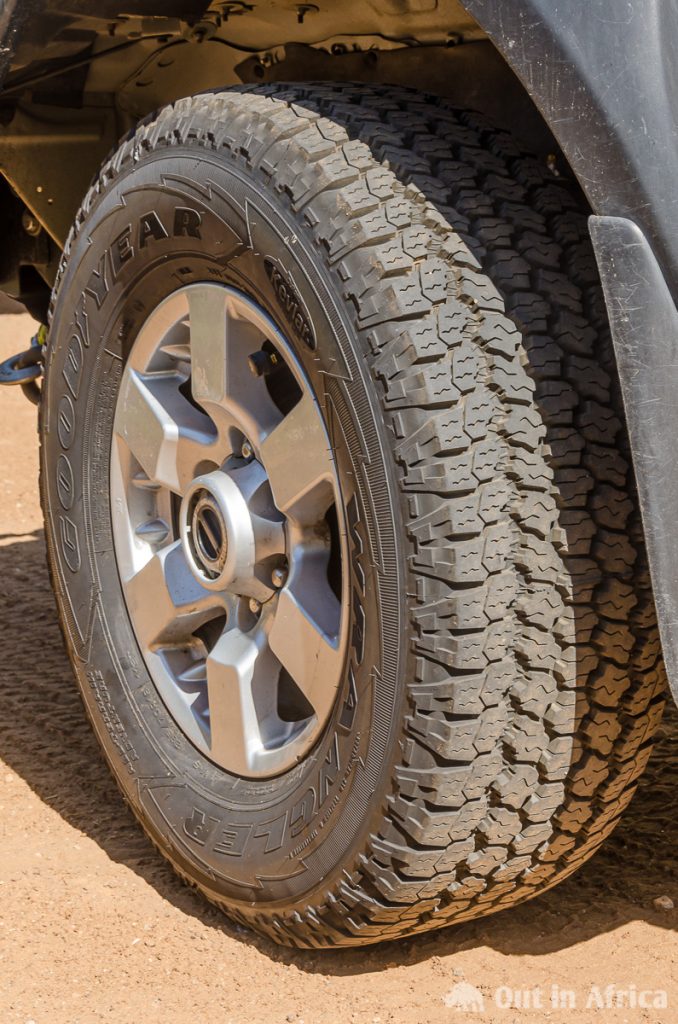
As the name suggests, AT tyres can be driven on all surfaces. On a tarred road they give a quiet and comfortable ride, but they are just as good on gravel and dirt. For extreme off-road, they are only suitable to a limited extent. They do not have a profile that cleans itself after a mud passage. However, they are already designed to support the driver during light off-road driving. Their side edges are reinforced by pulling the profile out over the side so that they adhere even better to uneven surfaces.
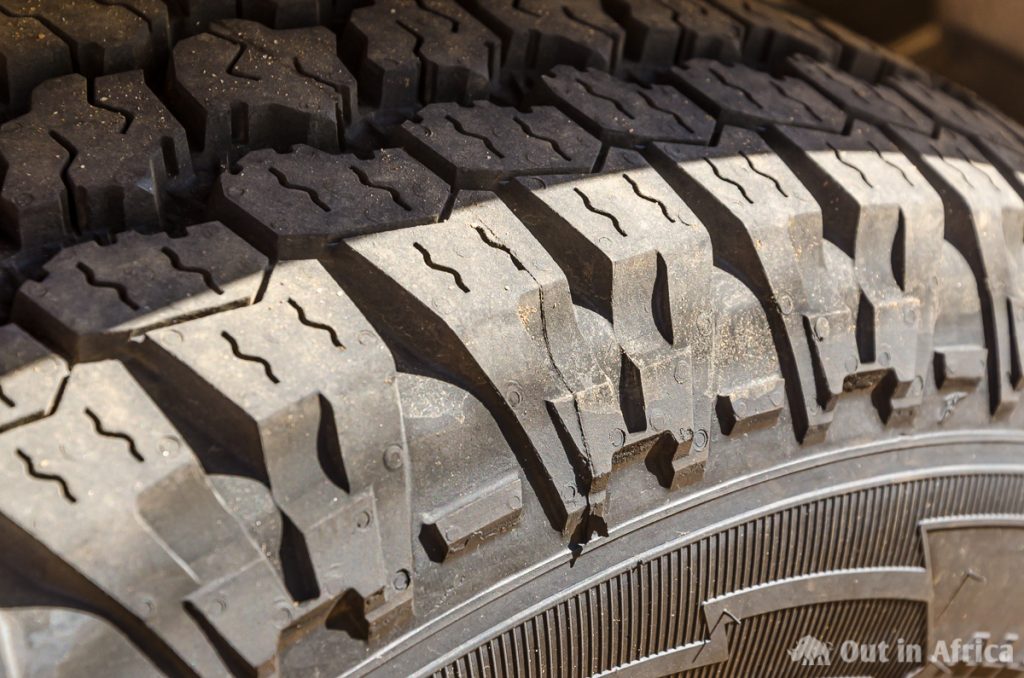
Mud Terrain Tyres
MT tyres are designed for real off-road use.
Advantages of MT tyres are that they have the best grip on offroad and are more robust due to the reinforced sidewalls.
Disadvantages of MT tyres are that they are louder on a tarred road and have less grip and therefore a longer braking distance than the other tyres. Other disadvantages of MT tyres are their higher weight and higher fuel consumption. We are always looking for ways to save weight and here we could get rid of 25 to 30 kg.
Choosing tyres means making compromises
Buying tyres is always a compromise between performance, safety, comfort and fuel economy in different terrain. The following video shows this impressively:
Look here for more Details.
Other websites that explain the differences well:
Mud terrain vs all terrain tyres
The Top Ten Reasons To Buy All-Terrain Tires
Factors that are important to us when it comes to tyres
We have to find the best compromise for us in the end. Which factors are important to us?
- We mainly drive gravel and tar roads. We like light off-road trails, but we don’t want to do extremely off-road anymore. That favours AT.
- We are looking for safe tyres with a short braking distance: AT.
- We are looking for quiet tyres. AT.
- We’re trying to save weight everywhere: AT.
- We are trying to save fuel for environmental reasons: AT.
- We live in Southern Africa in a dry country. There is hardly any mud here. AT.
Of course, there are routes on which an MT makes more sense: Okavango delta in the rainy season or extreme offroad. But let’s be realistic: In the last 45,000 km, we’ve driven maybe 100 km of such roads. This speaks in favour of AT, especially as we could also drive such roads with AT tyres.
In the end, the bottom line is: We buy AT tyres, if possible, with reinforced sidewalls.
What size?
The numbers on the tire
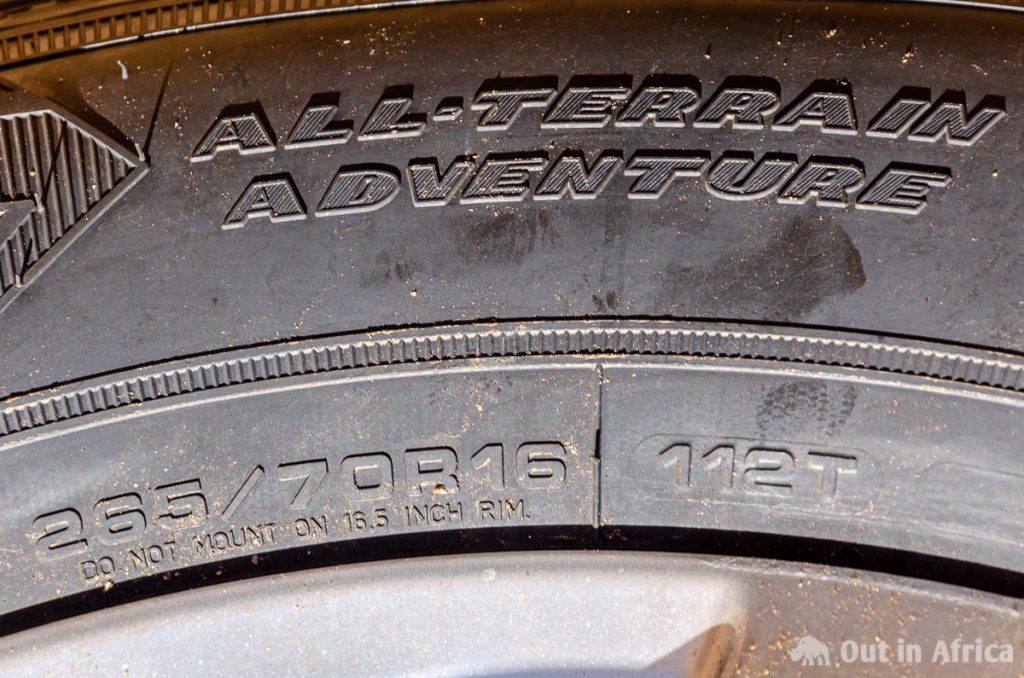
Each tyre has a series of numbers on it, such as 265/70R16 112T.
What do these numbers mean?
Was bedeuten die ganzen Zahlen auf meinem Reifen? is a good information source on the subject.
The first number stands for the tire width. In this case, it is 265 mm.
The second number stands for the ratio of the height to the width of the tyre in per cent. In this case, it is 70 %.
R stands for the type designation. Here “radial tyre”.
The number after that stands for the rim diameter in inches. In this case, it is 16 inches (40.64 cm).
The 112 in the example is the load index and is a code for the maximum allowable load. Code 112 means that the tyre can carry 1120 kg.
Finally, after the load index, the “T”. This is the speed index and indicates the maximum speed that can be driven with this tyre. With the code “T”, up to 190 km/h can be driven.
Our tyres so far
So far, we have had 235/85/R16 tyres. We can calculate the wheel diameter as follows if we convert the 16 inches for the rim into 406 mm:
(235 * 0,85) * 2 + 406,4 mm = 805,9 mm wheel diameter.
When we bought the car from Nissan, we wanted BF Goodrich tyres, and our dealer had had the tyres fitted in this size. It was not a good idea. The wheel has a much larger diameter than recommended. A larger diameter means that the gearbox, and therefore the gear ratios, work differently than they should. The car is sluggish when you pull off; the ratio in Low Range Drive is not as low as it should be; the fuel consumption is higher. The different gear ratio can cause damage to the gearbox. All these disadvantages do not outweigh the advantage of higher ground clearance.
We, therefore, decided to install the next tyres in the recommended size from the manufacturer.
However, some of the “experts” we interviewed, recommended size 265/75. Here, too, we can calculate the wheel diameter:
(265 * 0.75) * 2 + 406.4 mm = 805.9 mm wheel diameter.
There is no difference to the tires we had mounted.
Recommended by the manufacturer
Nissan recommends the size 255/70/R16 in its manual for our car. The wheel diameter is, therefore:
(255 * 0.70) *2 = 357 mm + 406.4 mm = 763.4 mm wheel diameter.
This diameter makes a difference of 43 mm diameter to our previous tyre. This means that we lose a ground clearance of 21.5 mm.
During my research, I soon noticed: 255/70/R16 are not so easy to come by. I asked others with more experience in buying tyres and got the information that they would never buy 255/70/R16. The reasons were: this size tyres are only sold in big cities, not in a small tyre repair shop in the deepest wilderness. So, if we needed a new tire, we’d be stuck. 265/70/R16, on the other hand, are available in a much larger selection. They are the normal all-round tyres in Southern Africa.
(265 * 0,70) * 2 + 406,4 mm = 777 mm wheel diameter
is slightly larger than the tyres recommended by Nissan, but not quite as oversized as the BF Goodrich we’ve been fitting until now.
We decided to take the size 265/70/R16.
Which manufacturer?
BF Goodrich tyres are cool. The tread makes a statement!
But does it have to be BF Goodrich, especially since tyres from this manufacturer are also more expensive than most other tyres? We are past the age where coolness is the decisive factor.
With our previous car, we have also made the experience that you can have your trouble with BF Goodrich tyre sizes. BF Goodrich’s are often sold in American sizes. The width is given in inches instead of millimetres. It is then challenging to combine BF Goodrich tyres with those from other manufacturers with other dimensions. If we had to buy a new tyre somewhere in Kaokoland, we would hardly find BF Goodrich but would have to use a tyre from another manufacturer. This tyre might be a bit smaller or bigger. This mixture of tyre sizes works in an extreme emergency but is not suitable for the car.
For this reason, we wanted to have a look at the tyres of other manufacturers.
We started a survey among our acquaintances and also interviewed employees of the workshops we trust. These statements were supplemented by a test of all-wheel-drive tyres conducted by the magazine SA 4×4 in 2018.
Several people have said that BF Goodrich’s are good tyres but advised all-terrain instead of mud-terrain. We can’t complain about the tyres either. We didn’t have a single puncture in the 45,000 kilometres we drove.
Other manufacturers mentioned were:
- Bridgestone Dueler AT
- Goodyear Wrangler
- Pirelli Scorpion
- Hankook Dynapro
- Michelin LTX
We were advised against the following tyres
- General Grabber (despite the good reviews a friend had to replace three of his tyres after 15 000 km)
- Pirelli Scorpion (not suitable for extreme gravel on Namibian roads)
So, what’s left is
- BF Goodrich AT
- Bridgestone Dueler AT
- Goodyear Wrangler
- Hankook Dynapro
- Michelin LTX
In the end, we take…
Now we went back to the Internet. I read many reviews on different tyres. Which tyre would be best for us and the roads we drive on?
I also had to find out which tyres I could buy here in Windhoek, Namibia. I came across an offer of Goodyear Wrangler tyres. These tyres are Kevlar reinforced on the sides as well. The reviews on the internet were excellent.
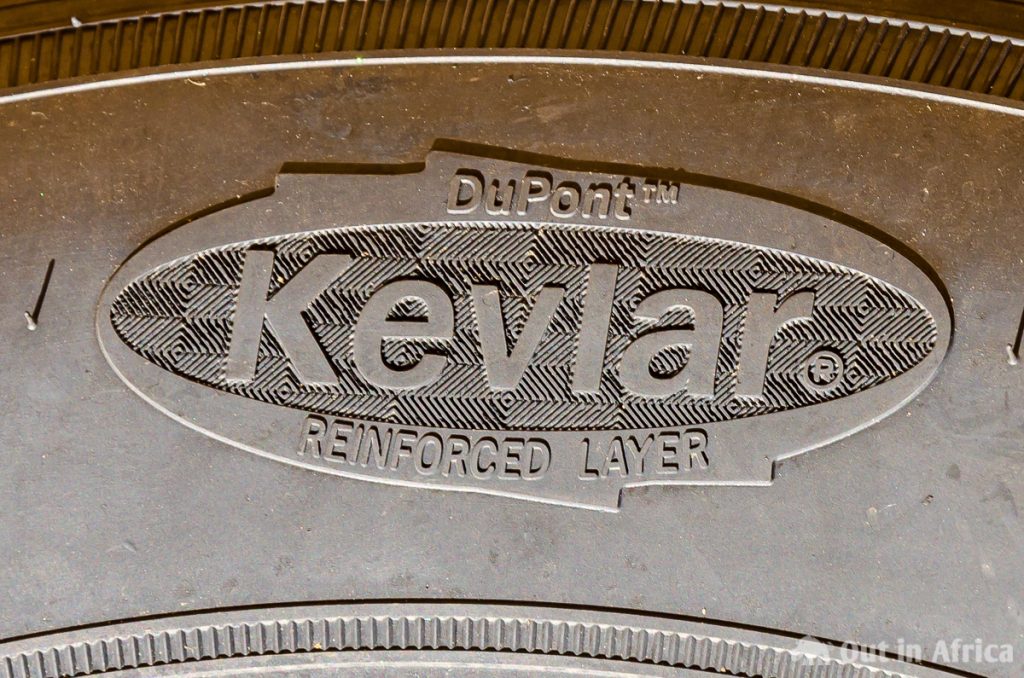
After a night’s sleep, this decision still made the most sense. So we got six new Goodyear Wrangler All-Terrain Adventure.
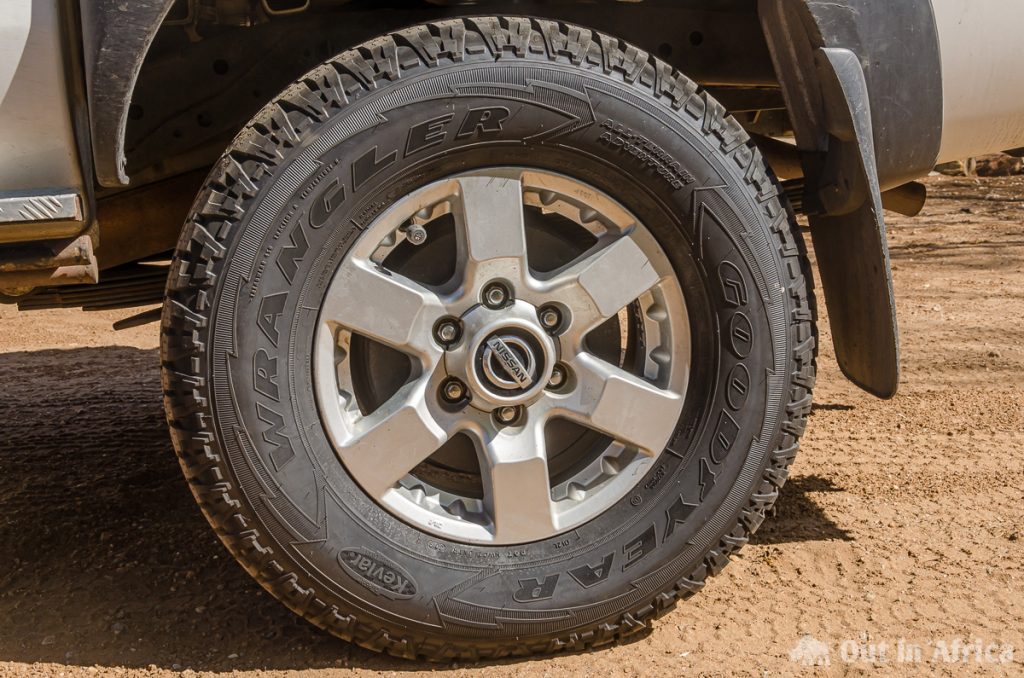
Yes, we buy six tyres because we have two spare tyres. Every five to ten thousand kilometres, the tyres are rotated so that they all run evenly.
Of course, we make sure that we always have the right tyre pressure, as described here: The correct Tyre Pressure for driving Offroad.
With our choice, we hope to be able to drive more than 50,000 km safely, quietly and with lower fuel consumption.
Over to you: Do you have experience with off-road tyres? Which tyres did you choose and why? Write us a comment.

Anette Seiler
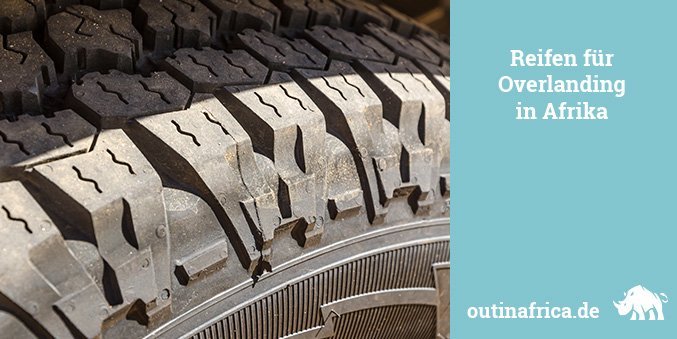
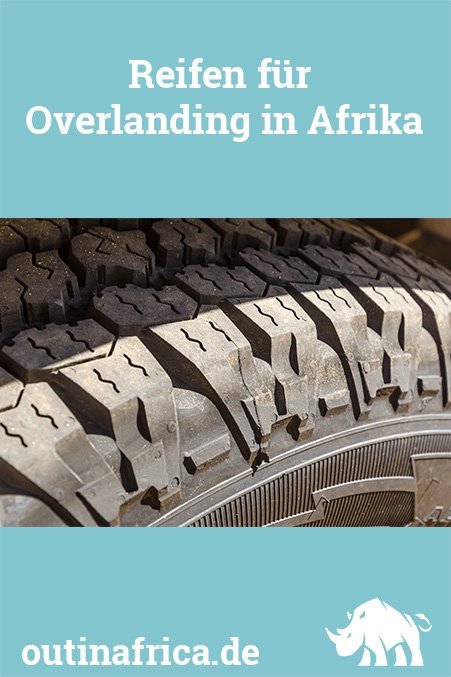

I am also looking to replace 6 tyres and I was leaning towards the Goodyear adventure AT. I am currently on the MT version but with two tyres gone I don’t want to push myself into MTs again. The current tyres on the vehicle still have a good depth of tread so will be worth something to someone.
Who did you end up buying from and how much was charged?
Hi Bernard,
I came across this blog post while doing some reading on the topic. To your question, Trentyre Namibia is the Goodyear agents and so far have great prices on these Wrangler AT Adventure (with Kevlar).
Rgds
This is a very late comment, but for anyone who looks at this great article in 2023 onwards. Agree with everything Bernard said and the Good years were the right choice for him and where he goes. It all comes down to what are you using your vehicle for and type of terrain you will be driving. For me, I also travel to Namibia, and Koakoland in particular, the Van Zyls pass road of almost 100km is not a road…. Also Zambia, Zim, Botswana etc. I carry heavy loads in my Hikux double cad GD6 and also like to drive over rocky terrain or in dry river beds A la Namibia so also look for additional ground clearance. I have driven probably close to 90,000kms off-road with a loaded vehicle. I run 33 inch tyres 255/80/17’s ( narrower which I prefer,bit lighter, more flex, longer track when deflated, push less mud infront etc etc in rainy season in Bots) and have never had a puncture or sidewall penetrated in all that driving. I run a tyre not mentioned above, Cooper ST Maxx , they wouldn’t take part in that survey for good reasons, and wouldn’t change them for any other tyre, even though they cost a bloody fortune. They are probably more a hybrid tyre, somewhere between an AT and a MT which is perfect for me. The other 90,000 kms has been driven on tar or good dirt roads. Mileage, rotating 5 tyres ( take a sixth when I go bush) is approx 50,000kms. Hope this provides some further information for someone.